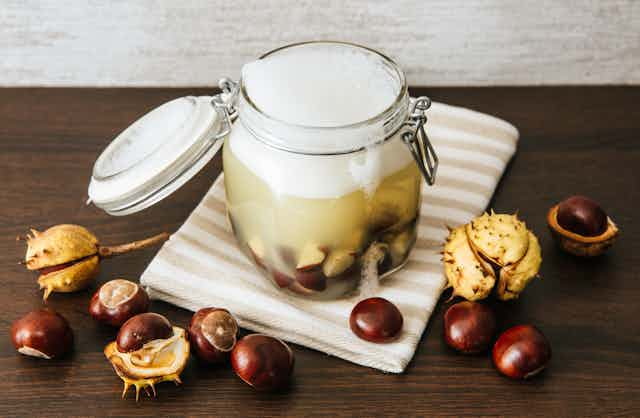Good hygiene practices such as disinfecting surfaces and regularly washing hands with soap and running water are important in preventing all infections.
The cost of commercial sanitisers and soap – and access to water – can be a problem for low-income communities. The United Nations has reported that about three billion people (40% of the world’s population) don’t have soap and water available in their homes.
In these settings, the use of soapy plant species to sanitise hands and disinfect surfaces might be an option. Modern soap has its origins in the sap of plants that contain chemicals called saponins. Chemically, the structures of saponins and of commercial soap are similar.
Saponins can destroy viruses and other microorganisms in the same way commercial soaps and detergents do.
Yet there is very little literature on the use of plants for hand hygiene. To address this, we conducted a literature review of research about saponin-rich plants from around the word with a specific focus on southern African flora. We set out to report on the occurrence and distribution, pharmacology and toxicity, mechanism of action, and overall availability of saponin-rich plants in southern Africa.
We compiled a checklist of plants that are rich in saponins and easily accessible to communities in southern Africa. Some of them have been used traditionally for hygiene, and others appear to have useful properties that weren’t widely known.
We found research on 51 species in the region. South Africa, Zimbabwe, Zambia, Mozambique, Lesotho, Namibia and eSwatini were reported to contain a wealth of saponin-containing plants. Only 15 of these species had actually been reported as being used for soaps or shampoos in various communities. These include soap bark, soap creeper, soap nettle, soap pod tree, “boot protectors” and dune soapberry. Leaves, twigs, roots, stem barks, fruits, seeds, and flowers of these plants are rubbed or agitated in water, forming a lather, which is then used for washing, bathing, and hair shampooing.
We also looked for scientific data to support any antimicrobial claims about soapy plants. Numerous studies showed evidence that saponins possess potent antiviral, antibacterial, and antifungal activities.
Saponins and harmful microorganisms
Soap is able to detach dirt from a surface and disperse it into water, leaving the surface clean. It also has the extra property of being able to destroy microorganisms. Like commercial soap, saponins have been shown to be able to destroy microorganisms such as viruses, bacteria and some fungi. They can destroy the outer coat that protects viruses. This makes the viruses more susceptible to being denatured. Saponins in soapy plants use the same mechanism to kill bacteria and fungi.
Saponins are relatively non-selective in their disruption of cells. This makes them effective against a wide range of microorganisms that cause communicable diseases.
The extent to which microorganisms are susceptible to saponins depends on the types of saponins, and the types and structures of the targeted microorganisms. In enveloped viruses like the coronaviruses, the disease-causing proteins that are encoded by the viruses are protected by a lipid coat that makes it difficult to kill them. This is unlike the non-enveloped viruses like rotaviruses, which can be easily controlled by chemical substances because they don’t have the protective envelope.
But soap and saponins do work against coronaviruses. Soap is made of molecules which easily bond with water at one end but avoid water at the other end. When you wash your hands with soap, the water-hating ends will try to move away from water. As they do so, they interact with the lipid coating of the coronaviruses, disrupting and destroying them. Since saponins are soap, they will do the same to coronaviruses.
Saponins also work against bacteria and fungi. Some bacteria have an external membrane that protects their genetic material. Escherichia coli, a common disease-causing agent, is one of these bacteria. But soap can disrupt this layer, which is basically made up of lipid.
Soaps and saponins are also useful against fungi because keeping the skin clean will prevent the growth and spread of fungi. Soaps and saponins help with thorough cleaning. Soaps are safer than antifungal agents, which can be toxic to mammalian cells.
Our review suggests that the sap of soapy plants found in southern Africa could be useful as disinfectants or sanitisers. The use of plants to formulate crude antimicrobial products could increase access to hygiene and also lead to better conservation of the plants.

